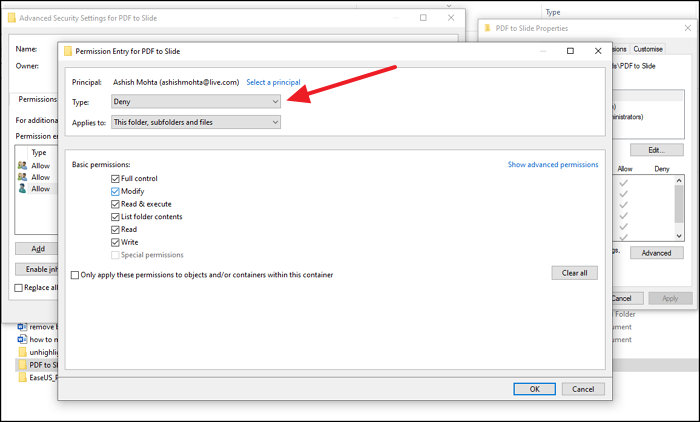

Recovering accidentally deleted or overwritten data can sometimes be as simple as searching through the computer’s Recycle Bin. Backup systems should also be used to preserve previous data states. An optimized workflow will also leave little room for human error to occur while saving employees time and making mistakes easier to spot. Automation minimizes the amount of human interaction with data, which reduces the risk of deletion or overwriting.
#PREVENT DMG FROM BEIGN DELETED SOFTWARE#
Mistakes from human error can also be minimized through several software means. This can be as simple as knowing if the documents they are working with will be backed up automatically or if they must manually save files while they are working. Ensure your employees understand how data processing within your company works and how your backup systems function. One important measure to prevent human error in data handling is proper training. Human error can also play a role in many other main causes of data loss, including hard drive damage, liquid spills, software corruption and hard drive formatting. For businesses, these mistakes can result in the unintentional deletion of data files or sections of text. Without realizing it, employees can overwrite important files or delete information that is essential to your business. Humans are not infallible - we all make mistakes and sometimes they’re big ones. 10 percent of data loss is a result of software failureĪwareness of the types of data loss and the risks associated with losing data is essential for preventing data loss that can be a major cost to your business.14 percent of data loss is caused by human error.67 percent of data loss is caused by hard drive crashes or system failure.Hard drive crashes account for the highest percentage of data loss, but human errors and issues with software follow closely behind. 10 Common Causes of Data Lossĭata loss can be caused by many different factors, and each poses a unique problem for data recovery. That same study found that it could take 280 days – more than nine months – to identify and contain a data breach. company, according to an IBM study, was $8.6 million – highest in the world. Leaving data unprotected is an expensive risk to take - the average cost of a data breach to a U.S. 70 percent of small firms go out of business within a year of a large data loss incident.43 percent of these companies do not reopen again.51 percent of these companies close within two years of the data loss.94 percent of companies that experience severe data loss do not recover.The inconvenience of data loss can have even bigger implications for your business when a large amount of data is lost: Even if your company can recover from the data loss, you will need to spend time rebuilding client relationships. When sensitive data is stolen or compromised, your company must disclose this to clients, causing you to lose their trust and respect.

It can be costly for your business to weed out and repair damaged files.ĭata loss also sets back productivity timelines and can cause you to lose customers if it is accompanied by security breaches. Data loss caused by corruption or viruses poses particular problems as the extent of data loss caused can sometimes be difficult to determine. While you may be able to locate hard copies of information, these may not be as up-to-date as the digital copies that were lost. When important files and documents are lost, your business must spend time and resources recreating or recovering these files to fill the gaps left by loss.

#PREVENT DMG FROM BEIGN DELETED HOW TO#
Read on for the ten most common causes of data loss, how to prevent them, and tricks for recovering data if the loss does occur.ĭata loss is a major inconvenience that disrupts the day-to-day function of any information-based business. You can minimize your business’s potential for data loss by understanding what leads to data loss. In other instances, lost files and information cannot be recovered, making data loss prevention even more essential.

Some lost data is recoverable, but this process often requires the assistance of IT professionals and costs time and resources your business could be using elsewhere. Losing files and documents often has a lasting impact on your company’s financial health. Viruses, physical damage or formatting errors can render data unreadable by both humans and software. Data loss occurs when data is accidentally deleted or something causes data to become corrupted. Data loss is a serious problem for businesses of all sizes- losing files means losing time and money to restore or recover information that is essential to your business.


 0 kommentar(er)
0 kommentar(er)
